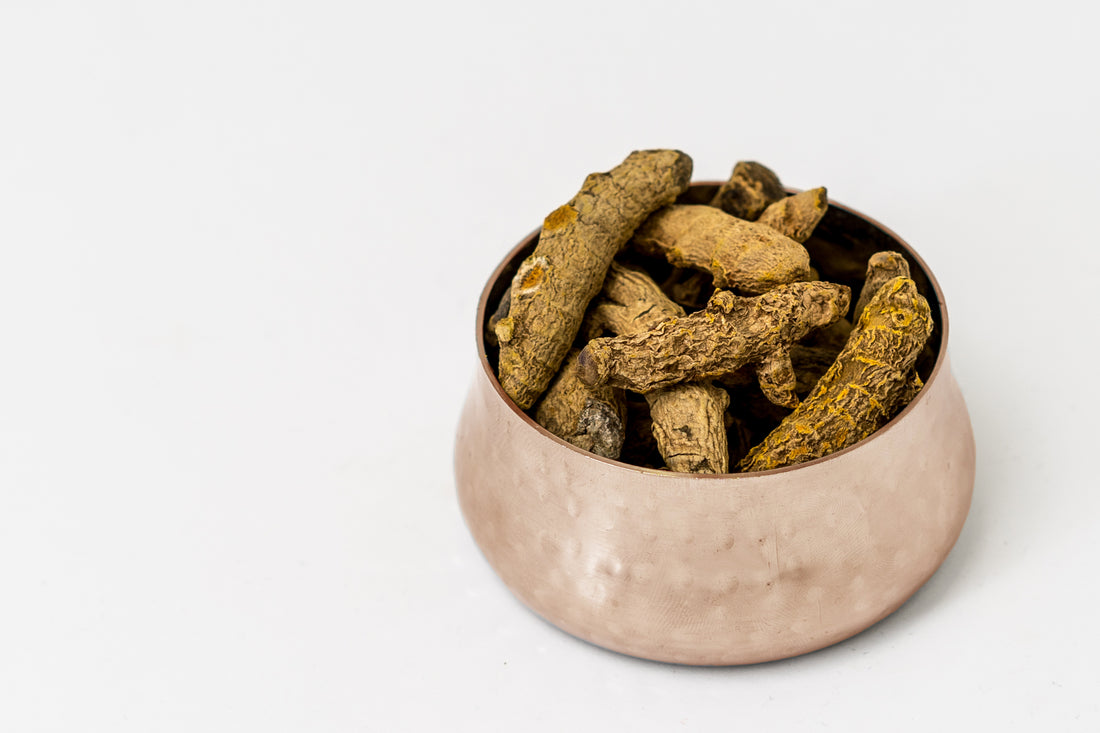Turmeric, also known as Curcuma longa, is a spice commonly used in South Asian cuisine and traditional medicine. In recent years, turmeric has gained widespread attention for its potential health benefits. Here are some of the ways turmeric may be beneficial for your health.
- Anti-Inflammatory Properties
Curcumin, the main active compound in turmeric, has potent anti-inflammatory properties. Inflammation is a normal response to injury or infection, but chronic inflammation can contribute to many chronic diseases such as arthritis, diabetes, and cancer. Studies have shown that curcumin can help reduce inflammation in the body by inhibiting the production of inflammatory molecules.
- Antioxidant Effects
Curcumin also has powerful antioxidant effects, which can help protect your body from damage caused by free radicals. Free radicals are unstable molecules that can cause oxidative damage to cells and contribute to the development of chronic diseases. Curcumin has been shown to neutralize free radicals and increase the activity of the body's own antioxidant enzymes.
- Brain Health
Curcumin may also be beneficial for brain health. It has been shown to increase levels of brain-derived neurotrophic factor (BDNF), a protein that helps promote the growth and survival of neurons. Low levels of BDNF have been linked to neurological disorders such as Alzheimer's disease and depression. Studies have also suggested that curcumin may improve memory and cognitive function in healthy adults.
- Heart Health
Turmeric may also be beneficial for heart health. It has been shown to improve several factors that contribute to heart disease, such as reducing inflammation, improving endothelial function, and reducing the risk of blood clots. One study found that taking curcumin supplements for eight weeks significantly improved markers of heart health in people with metabolic syndrome.
- Cancer Prevention
Some studies suggest that curcumin may have anti-cancer properties. It has been shown to inhibit the growth and spread of cancer cells in laboratory studies, and some animal studies have suggested that it may help prevent certain types of cancer. However, more research is needed to determine its effectiveness in humans.
- Pain Relief
Turmeric may also have pain-relieving properties. Several studies have shown that curcumin can help reduce pain in people with conditions such as osteoarthritis and rheumatoid arthritis. It may work by reducing inflammation and blocking pain signals in the body.
Overall, turmeric and its active compound curcumin have many potential health benefits. However, more research is needed to fully understand its effects on human health.
References:
-
Aggarwal, B. B., & Harikumar, K. B. (2009). Potential therapeutic effects of curcumin, the anti-inflammatory agent, against neurodegenerative, cardiovascular, pulmonary, metabolic, autoimmune and neoplastic diseases. The international journal of biochemistry & cell biology, 41(1), 40-59.
-
Aggarwal BB, Prasad S, Reuter S, et al. Identification of novel anti-inflammatory agents from Ayurvedic medicine for prevention of chronic diseases: "reverse pharmacology" and "bedside to bench" approach. Curr Drug Targets. 2011;12(11):1595-1653. doi: 10.2174/138945011798109591 https://www.ncbi.nlm.nih.gov/pmc/articles/PMC3144156/
-
Aggarwal, B. B., Gupta, S. C., & Sung, B. (2013). Curcumin: an orally bioavailable blocker of TNF and other pro-inflammatory biomarkers. British Journal of Pharmacology, 169(8), 1672-1692. doi:10.1111/bph.12131
-
Ak, T., & Gülçin, İ. (2008). Antioxidant and radical scavenging properties of curcumin. Chemico-Biological Interactions, 174(1), 27-37. doi:10.1016/j.cbi.2008.05.003
-
Belcaro, G., Cesarone, M. R., Dugall, M., Pellegrini, L., Ledda, A., Grossi, M. G., & Hosoi, M. (2010). Efficacy and safety of Meriva®, a curcumin-phosphatidylcholine complex, during extended administration in osteoarthritis patients. Alternative Medicine Review, 15(4), 337-344. PMID: 21194249 https://pubmed.ncbi.nlm.nih.gov/21194249/
-
Chainani-Wu, N. (2003). Safety and anti-inflammatory activity of curcumin: a component of tumeric (Curcuma longa). Journal of Alternative and Complementary Medicine, 9(1), 161-168. doi:10.1089/107555303321223035
-
Bhattarai S, Tran VH, Duke CC. The stability of curcumin in aqueous media. J Pharm Sci. 2010;99(8):3567-3576. doi: 10.1002/jps.22188 https://pubmed.ncbi.nlm.nih.gov/20333725/
-
Chandran B, Goel A. A randomized, pilot study to assess the efficacy and safety of curcumin in patients with active rheumatoid arthritis. Phytother Res. 2012;26(11):1719-1725. doi: 10.1002/ptr.4639 https://pubmed.ncbi.nlm.nih.gov/22407780/
-
Hewlings SJ, Kalman DS. Curcumin: A Review of Its' Effects on Human Health. Foods. 2017;6(10):92. doi: 10.3390/foods6100092 https://www.ncbi.nlm.nih.gov/pmc/articles/PMC5664031/
-
Hussain Z, Thu HE, Amjad MW, Hussain F, Ahmed TA, Hashmi F. Oxidative Stress and Antioxidant Potential of One Hundred Medicinal Plants. Curr Top Med Chem. 2017;17(26):2874-2907. doi: 10.2174/1568026618666180716153435 https://pubmed.ncbi.nlm.nih.gov/30019658/
-
Gupta, S. C., Sung, B., Kim, J. H., Prasad, S., Li, S., & Aggarwal, B. B. (2013). Multitargeting by turmeric, the golden spice: From kitchen to clinic. Molecular Nutrition & Food Research, 57(9), 1510-1528. doi:10.1002/mnfr.201100741
-
Jurenka JS. Anti-inflammatory properties of curcumin, a major constituent of Curcuma longa: a review of preclinical and clinical research. Altern Med Rev. 2009;14(2):141-153. https://pubmed.ncbi.nlm.nih.gov/19594223/
-
Kuptniratsaikul V, Thanakhumtorn S, Chinswangwatanakul P, Wattanamongkonsil L, Thamlikitkul V. Efficacy and safety of Curcuma domestica extracts compared with ibuprofen in patients with knee osteoarthritis: a multicenter study. Clin Interv Aging. 2014;9:451-458. doi: 10.2147/CIA.S58535 https://www.ncbi.nlm.nih.gov/pmc/articles/PMC3964021/
-
Menon, V. P., & Sudheer, A. R. (2007). Antioxidant and anti-inflammatory properties of curcumin. Advances in Experimental Medicine and Biology, 595, 105-125. doi:10.1007/978-0-387-46401-5_3
-
Shehzad, A., Rehman, G., & Lee, Y. S. (2013). Curcumin in inflammatory diseases. BioFactors, 39(1), 69-77. doi:10.1002/biof.1079
-
Turmeric. (n.d.). National Center for Complementary and Integrative Health. Retrieved February 22, 2022, from https://www.nccih.nih.gov/health/turmeric
-
Nelson KM, Dahlin JL, Bisson J, et al. The Essential Medicinal Chemistry of Curcumin. J Med Chem. 2017;60(5):1620-1637. doi: 10.1021/acs.jmedchem.6b00975 https://pubmed.ncbi.nlm.nih.gov/280

